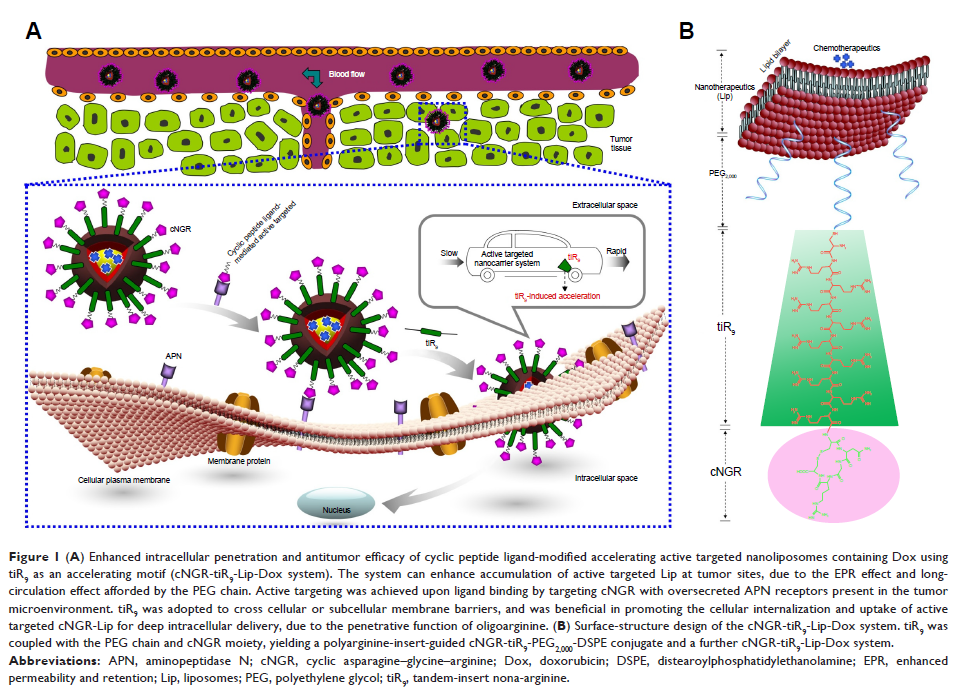9 0 8 0 2
论文已发表
注册即可获取德孚的最新动态
IF 收录期刊
- 2.6 Breast Cancer (Dove Med Press)
- 3.9 Clin Epidemiol
- 3.3 Cancer Manag Res
- 3.9 Infect Drug Resist
- 3.6 Clin Interv Aging
- 4.8 Drug Des Dev Ther
- 2.8 Int J Chronic Obstr
- 8.0 Int J Nanomed
- 2.3 Int J Women's Health
- 3.2 Neuropsych Dis Treat
- 4.0 OncoTargets Ther
- 2.2 Patient Prefer Adher
- 2.8 Ther Clin Risk Manag
- 2.7 J Pain Res
- 3.3 Diabet Metab Synd Ob
- 4.3 Psychol Res Behav Ma
- 3.4 Nat Sci Sleep
- 1.9 Pharmgenomics Pers Med
- 3.5 Risk Manag Healthc Policy
- 4.5 J Inflamm Res
- 2.3 Int J Gen Med
- 4.1 J Hepatocell Carcinoma
- 3.2 J Asthma Allergy
- 2.3 Clin Cosmet Investig Dermatol
- 3.3 J Multidiscip Healthc

环肽配体装饰的加速、活性靶向纳米药物所具有的深化的细胞/亚细胞界面渗透和增强的抗肿瘤功效
Authors Shi NQ, Li Y, Zhang Y, Li ZQ, Qi XR
Received 28 April 2018
Accepted for publication 3 July 2018
Published 19 September 2018 Volume 2018:13 Pages 5537—5559
DOI https://doi.org/10.2147/IJN.S172556
Checked for plagiarism Yes
Review by Single-blind
Peer reviewers approved by Dr Thiruganesh Ramasamy
Peer reviewer comments 3
Editor who approved publication: Dr Linlin Sun
Introduction: Acceleration and improvement of penetration across cell-membrane
interfaces of active targeted nanotherapeutics into tumor cells would improve
tumor-therapy efficacy by overcoming the issue of poor drug penetration.
Cell-penetrating peptides, especially synthetic polyarginine, have shown
promise in facilitating cargo delivery. However, it is unknown whether
polyarginine can work to overcome the membrane interface in an inserted pattern
for cyclic peptide ligand-mediated active targeting drug delivery. Here, we
conducted a study to test the hypothesis that tandem-insert nona-arginine (tiR9) can act as an accelerating component for
intracellular internalization, enhance cellular penetration, and promote
antitumor efficacy of active targeted cyclic asparagine–glycine–arginine
(cNGR)-decorated nanoliposomes.
Methods: Polyarginine was coupled with the polyethylene
glycol (PEG) chain and the cNGR moiety, yielding a cNGR–tiR9–PEG2,000–distearoylphosphatidylethanolamine
conjugate.
Results: The accelerating active targeted liposome (Lip)
nanocarrier (cNGR-tiR9-Lip–doxorubicin [Dox])
constructed in this study held suitable physiochemical features, such as
appropriate particle size of ~150 nm and sustained-release profiles.
Subsequently, tiR9 was shown to enhance
cellular drug delivery of Dox-loaded active targeted systems (cNGR-Lip-Dox)
significantly. Layer-by-layer confocal microscopy indicated that the
tandem-insert polyarginine accelerated active targeted system entry into deeper
intracellular regions based on observations at marginal and center locations.
tiR9 enhanced the penetration depth of cNGR-Lip–coumarin
6 through subcellular membrane barriers and caused its specific accumulation in
mitochondria, endoplasmic reticulum, and Golgi apparatus. It was also obvious
that cNGR-tiR9-Lip-Dox induced enhanced
apoptosis and activated caspase 3/7. Moreover, compared with cNGR-Lip-Dox,
cNGR-tiR9-Lip-Dox induced a significantly higher
antiproliferative effect and markedly suppressed tumor growth in HT1080-bearing
nude mice.
Conclusion: This active tumor-targeting nanocarrier
incorporating a tandem-insert polyarginine (tiR9) as an
accelerating motif shows promise as an effective drug-delivery system to
accelerate translocation of drugs across tumor-cell/subcellular membrane
barriers to achieve improved specific tumor therapy.
Keywords: accelerating
active targeting nanotherapeutics, tandem-insert nona-arginine, tiR9, cyclic asparagine–glycine–arginine, cNGR,
penetration and tumor therapy, multifunctional nanomedicines
